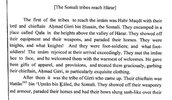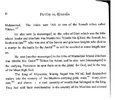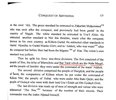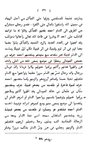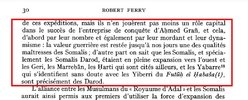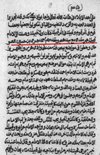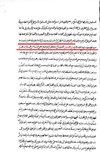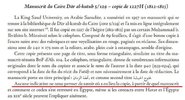@Shimbiris
East Custhitic speakers influenced Ge'ez, and one can expect a lesser influence to come the other way, highlighting contact historically more ancient than the medieval age. Ethio-Semitic words in our vocabulary are, in my opinion, shown through evidence (not that it negates that it could have happened later, as well) evidence of early contact, not necessarily, a medieval one.
We have linguists showing these associations, bringing attention to the fact that East Cushites always lived high up north (eliminating, once again the southern Ethiopian hypothesis, that lacks a leg to stand on at this point):
There are also some possible traces of contact, in the form of lexical borrowing, with an East Cushitic language or languages already in Ge‘ez, whose sole representatives today in Eritrea and northern Ethiopia are the closely related Saho and ‘Afar. Amharic and its closest relatives also show some lexical borrowing from an undefined Highland East Cushitic language indicative of an old, pre-modern contact. - Aaron Michael Butts, “Semitic Languages In Contact” (2015): p. 18
If Afar-Saho was in close contact with Ge'ez speakers -- a population that lived far north -- one reasonably surmise Afar-Saho was always where it is today (maybe even further north). Somalis should be superimposed on the northern region, parsimonious with everything. Of course contrary to what those linguistic formalist migration theorists put forth on their evidentiary deficient rigid system on the closed methodology of assumptions.
Observing how Eastern Cushites came in contact with these Semitic speakers earlier than the medieval, it is insufficient to claim that Xarla were Ethiopian Semitic peoples based on linguistics alone (as no other evidence supports this notion) when Semitic influence can draw from older period by separate sources.
śǝga ‘flesh, meat’: this is usually seen as a loan from Agaw (Proto-Agaw *sǝx-a)3 with the same meaning, though the g:x correspondence needs explaining. The situation is further complicated, on the one hand, by the fact that possible cognates of the Agaw term elsewhere in Cushitic show a medial ʔ (Proto-East Cushitic *soʔ-), and on the other hand, by the existence of a similar East Cushitic form *šaʕ- ‘cow’ (cf. also Beja šʔa ‘cow’ and ša ‘meat’). Yet another factor that seems relevant is the ‘Afar/Saho term saga ‘cow’, which shows the same medial as the Ge‘ez term, though of course has the meaning ‘cow’ and not ‘meat.’ - Aaron Michael Butts, “Semitic Languages In Contact” (2015): 19
You also see here that again, Eastern Cushites had a linguistic imprint on Beja, if I understood this excerpt correctly. This aligns with the East Cushitic influence in Nubian and other evidence I have seen. This is not the topic of the matter though. I only mentioned it since the source is thrown out in related bulk.
The thing is, I am not even going to grant that Ethio-Semitic loanwords equal that Xarla was an Ethio-Semitic speaker. That leap is not justified. The region was not isolated, and we had contact with Semitic speakers from Eritrea due to trade for thousands of years. Going through the Red Sea, as the northern Somali coastal people did extensively before Xarla was even documented. Such contact leaves linguistic items no matter how negligible, similar to how we had pre-Islamic linguistic contact with southern Arabians.
The notion is further reduced by the fact that Somalis of the region carry historical continuity with the exact history attributed to these so-called hypothetical Ethio-Semites. People have to apply reason to their models of how things were, consistent with how things turned out, or have a rational explanation of why such evidence is lacking on all reasonable grounds. For example, it is not intelligent to admit aw-Barkhadle was the 5th or 6th grandfather of the first sultan of Ifat while then later pretending Somalis had no presence where those people ruled. It's a contradiction. Evidence proves this lineage, so it defeats this historical fabrication.
Another point that defeats this is the construction.
Xarla-type construction was built along Somaliland in what we know defacto was where Somali pastoralists built communal structures for semi-aggregation, caravan stops of settlements, mosques, etc., claiming that the people that lived along Somaliland that used the same type of building principles were Ethio-Semites but not Somalis is moronic because then we would see an extremely high spike in not only genetics but a unique Ethio-Semitic-Somali history persisting there to the exclusion of the rest of Somalis which is an unjustified position at all levels, baring no evidence of such ever took place observing the cultures of the clans of that region today through documentation, even later anthropology.
Mind you the archeologists emphasized that pastoralists-leaning people built those places. You can say a lot about those archeologists and their deficient insight into the region, however, one thing is clear, they brought some descriptive aspects that demolish a lot of the nonsense peddled by the anti-Somali history crowd. For example, the notion that nomads are destructive and thus settled places needed walls to protect against them, to find out that there was no evidence of conflict anywhere else in those structures-built places and walls being rare.
Distribution found of settlements and the archeological team didn't check further although they might have suspected more structures existed deeper of this kind (ignoring the more ancient stuff unrelated to this period, of course):
View attachment 319953
The settlements were slightly different in Somaliland than in Harlaa and Harar which is not an issue because any place had regional variation within regions in terms of construction. The point is, that it comes from the same construction horizon, and that fact still stands. I mean, what is the next claim to cover this nonsense, that there were Habash pastoralists who lived in a desert environment with camels, indistinguishable from the average Somali? It becomes ridiculous.

 Well, I won't bother writing again.
Well, I won't bother writing again.

